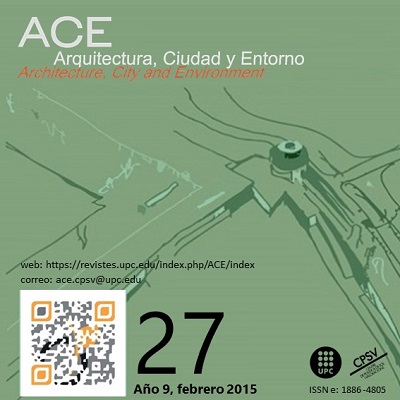La regeneración urbana en el encrucijada
DOI:
https://doi.org/10.5821/ace.9.27.2803Palabras clave:
Regeneración, rehabilitación, renovación, privatización urbanística.Resumen
El agotamiento de la expansión urbana ha obligado al sector de la construcción a plantearse alternativas a las del puro crecimiento, base y motor del reciente boom inmobiliario, pero también impulsor de una larga etapa de desarrollo de más de dos siglos que toca a su fin. Con esta intención se ha aprobado en 2013 la Ley de Rehabilitación, Regeneración y Renovación Urbanas, englobando bajo esa denominación la regulación de las operaciones de transformación de la ciudad existente. En este artículo se analizan las estrategias, los objetivos, los métodos e instrumentos propuestos para llevar a cabo las políticas de intervención y transformación del consolidado urbano, evidenciando las limitaciones de unos planteamientos que ignoran la realidad de un parque edificado obsoleto, necesitado de intervención, pero detentado por propietarios en gran medida escasamente solventes, unas operaciones que requerirán una potente intervención pública, una política de la vivienda alejada de los patrones de puro fomento de la actividad inmobiliaria habituales a lo largo del siglo XX. La alternativa es la privatización de la acción regeneradora, con una secuela de conflictos sociales ante la previsible incapacidad de una porción significativa de los actuales propietarios para afrontar los gastos derivados que con esta norma devienen deberes ineludibles.
Publicado
Número
Sección
Licencia
COPYRIGHT
El contenido de los artículos y los comentarios en ellos expresados son responsabilidad exclusiva de sus autores, y no reflejan necesariamente la opinión del comité editor de la revista. Los trabajos publicados por ACE pueden reproducirse bajo la licencia CC-BY-NC-ND 3.0 ES más información http://creativecommons.org/licenses/by-nc-nd/3.0/es/
Lo que implica que las personas autoras sólo retienen y mantienen los derechos de Copyright dentro de las limitaciones incluidas en la licencia anterior.





































